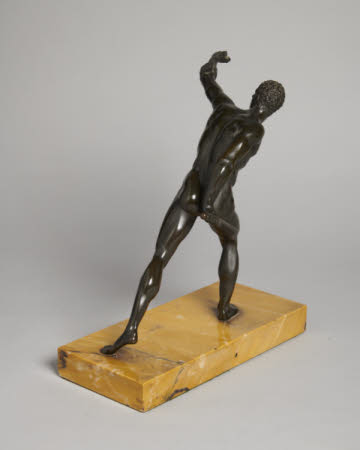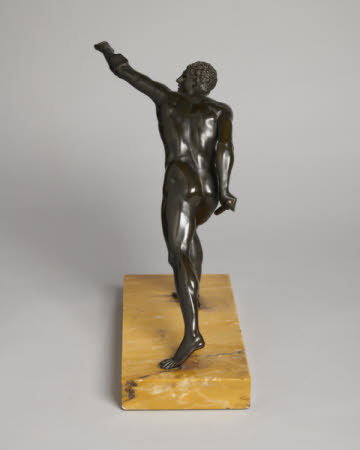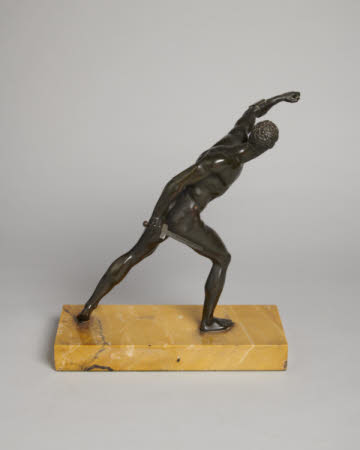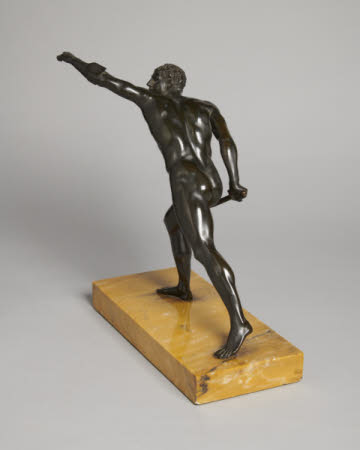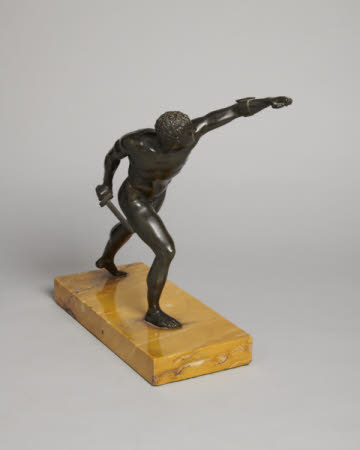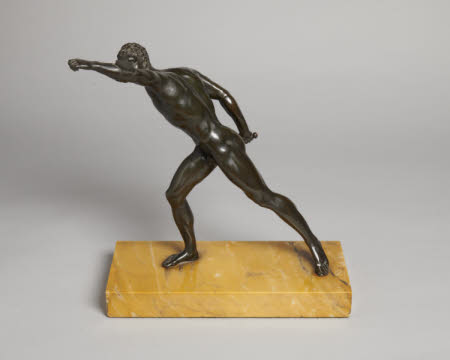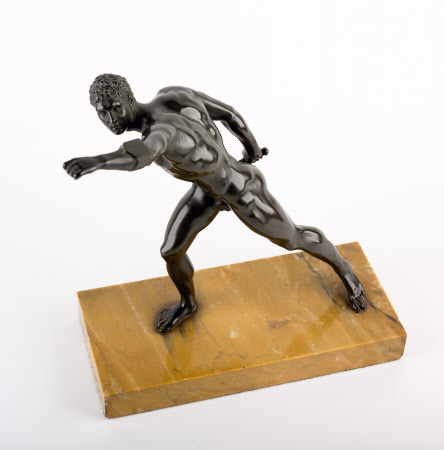The Borghese Gladiator
French School
Category
Art / Sculpture
Date
c. 1810 - 1840
Materials
Bronze, Marble
Measurements
368 x 150 mm; 325 mm (L)
Place of origin
France
Order this imageCollection
The Argory, County Armagh
NT 565237
Summary
Sculpture, bronze; the Borghese Gladiator; French; c. 1800-1850. A bronze reduction of a once celebrated classical sculpture which, from the seventeenth to the early nineteenth centuries, was one of the principal works of art to be seen at the Villa Borghese in Rome. It was bought with the rest of the Borghese sculpture collection by Napoleon Bonaparte in 1807 ad has since 1811 been on display in the Musée du Louvre in Paris. Although it has been historically known as a depiction of a gladiator, the sculpture more probably represents some heroic warrior.
Full description
A small bronze reduction of the celebrated antique sculpture known as the Borghese Gladiator (Haskell and Penny 1981, no. 43), signed by the sculptor Agasias of Ephesus. An athletic naked male figure moves forward as if in combat, his weight on his right leg, his head turned to his left and his left arm raised, to hold out a shield in defence. On the left elbow is the strap and a vestige of the shield itself. In his right hand the gladiator holds a short sword. His genitals are covered by a fig-leaf. Mounted on a rectangular base made of giallo antico marble. For nearly two centuries, the Borghese Gladiator was one of the main sights at the Villa Borghese in Rome, where it was housed in a special room named after it. The sculpture is signed by a Greek sculptor, Agasias of Ephesus, and is thought to have been made in around 100 A.D., probably a copy after a lost bronze version. The marble was found at Nettuno near Anzio and was quickly acquired by Cardinal Borghese. Two full-size bronze casts were made in the 1630s by King Charles I’s sculptor Hubert Le Sueur and were brought to Britain, where they quickly became hardly less famous than the original statue in Rome; one of Le Sueur’s casts is now at Windsor Castle (RCIN 71436) and the other is at Houghton Hall in Norfolk. In 1807, almost the entire Borghese collection of sculptures and antiquities was purchased by Napoleon Bonaparte from his brother-in-law Prince Camillo Borghese and brought to Paris. The Borghese Gladiator was put on display in the Musée Napoléon (now the Musée du Louvre) in 1811 and by 1815 was again housed in a room specially named after it. The sculpture was especially admired for its truthful rendering of the figure’s anatomy. The demand for copies of the Borghese Gladiator was so high that in the eighteenth century Prince Borghese had to restrict the taking of moulds from the original sculpture. Although still generally known by its traditional name of the Borghese Gladiator, it was recognised as early as the eighteenth century that the figure almost certainly did not originally represent a gladiator, but rather some hero or warrior. As well as full-scale copies, reductions in bronze and other materials have been made in large numbers since the seventeenth century. There is a large-scale cast in lead at Knole (NT 130066) and small bronze reductions at Belton House (NT 435366) and at Stourhead (NT 731856). These metal versions dispense with the tree trunk support that is a necessary support in the original marble. The Argory version seems very likely to be French in origin. It may have been made quite soon after the antique sculpture had come to Paris. Around the scale of the bronze version of another famous antiquity, the so-called Arrotino (NT 565235), both bronzes could well have been part of the group of ‘Five bronze figures’ valued at a total of £45 16s. 8d., that were sent from Bordeaux to Walter McGeough in November 1822. Jeremy Warren November 2022
Provenance
By descent; Walter McGeough Bond (1908-86), by whom given to the National Trust in 1979.
Makers and roles
French School, sculptor
References
Haskell and Penny 1981: Francis Haskell and Nicholas Penny, Taste and the Antique, The Lure of Classical Sculpture 1500 - 1900, New Haven and London, 1981, pp. 221-24, no. 43. Coliva 2011: Anna Coliva et al, I Borghese e l’Antico, exh. cat., Galleria Borghese, Rome 2011, p. 20, fig.2, p. 226, fig. 194.
